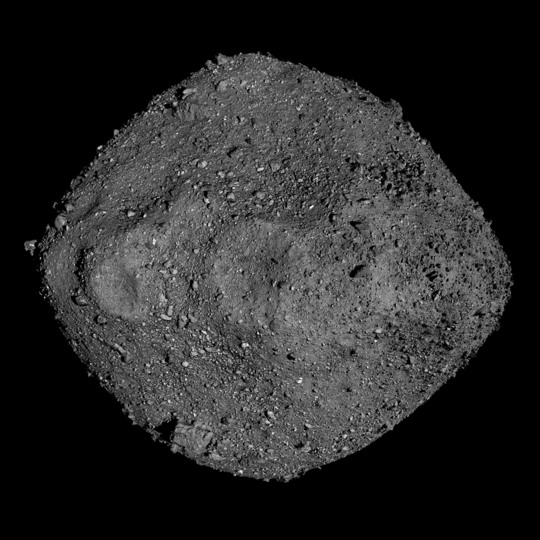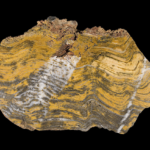Back in November 2024, I wrote a posting about chirality with an explanation of why life on Earth is comprised of left-handed (L-amino) acids and right-handed sugars referred to as D-sugars. The D stands for DNA. The left-handedness of life on Earth is visible in the way proteins curl, always to the left, a fundamental aspect of their biochemistry.
Scientists suspected that elsewhere in the Universe we would find evidence of life right-handedness. Meteorite fragments found here supported that idea. What we have discovered from Bennu, an asteroid, has confirmed that the chemical soup of life can be equally left and right-handed.
Bennu is a carbonaceous asteroid. Carbonaceous means it contains carbon, nitrogen, and organic compounds. Discovered in 1999, it is classified as a Near-Earth Object or NEO that passes by us at its closest a distance half of that between us and the Sun. It does this every six years and circles our star every 1.2 Earth years. Bennu is roughly 490 metres (1,607 feet) in diameter and has the consistency of a hill of gravel, rubble and dirt.
A sample from Bennu, an amount equivalent in weight to a regular bar of sap, was collected by NASA’s Osiris Rex mission when it rendezvoused with the asteroid in 2018. In September 2023, it made it back to Earth. What that sample revealed is changing our understanding of just how complex life could have been on Earth if when it started here it was featured both left and right-handed amino acids.
The Bennu samples reveal ammonia and nitrogen-rich organic compounds and the residue of brine (salt water). These samples are rich in carbon, nitrogen and ammonia and include 14 of the 20 L-amino acids that are found in proteins, the tools of cell life. The samples contain amines, formaldehyde, carboxylic acids, polycyclic aromatic hydrocarbons and N-heterocycles. plus all five nucleobases found in DNA and RNA. The brine contains sodium carbonates, phosphates, sulphates and chlorides (the latter is the salt we sprinkle on french fries).
Astronomers and exobiologists hypothesize that Bennu formed from ejected rubble from a celestial collision to its parent larger body some 4.5 billion years ago. That larger asteroid or proto-planet orbited beyond where Saturn is today. The collision created loose material that gradually gathered together to make Bennu. It also sent the asteroid on a trajectory to the inner Solar System. The speculation about Bennu’s parent is that it resembled a watery body like Saturn’s Enceladus, Jupiter’s Europa, and the dwarf planet Ceres. It is believed that the building blocks of life could have begun to assemble in the saltwater environment of Bennu’s parent and after the collision became permanently frozen in time for us to discover when the Osiris Rex mission brought the samples to us.
The evidence Bennu has revealed indicates an early Solar System filled with organic building blocks for the formation of life. The interesting difference is that the sample building blocks contain both right-handed and left-handed amino acids.
We don’t find right-handed amino acids on Earth. We do on Bennu which suggests that our left-handed world that produced the life we see appears to have happened by the luck of the draw. If Earth had received an equal amount of right-handed organic compounds during its early history, the life that would have emerged could have been far more variable than what we see.
A right-handed “mirror” world of amino acids in abundance is changing our theories on the origins of life. Researchers have synthesized proteins with right-handedness seeking exotic cures for diseases. Now we find that our Solar System was an incubator for right-handed mirrored building blocks so different from the ones responsible for our existence.
This is just one of many mysteries in our Universe. We are made of matter but there is a mirrored opposite called antimatter. Our Universe contains dark matter and dark energy, stuff we are still trying to fathom. We are constructed from L-amino acids, the precursors to DNA, the double-stranded self-replicating nucleic acid. Now we know there are R-amino acids, the mirrored opposite of those responsible for the evolution of life on Earth.
Now, when we search for life elsewhere in the Solar System, whether on or below the surface of Mars, in the high atmosphere of Venus, or on ocean ice moons and dwarf planets, our parameters for discovery have to widen considerably. What will a right-handed-based life form look like? Discoveries await.









